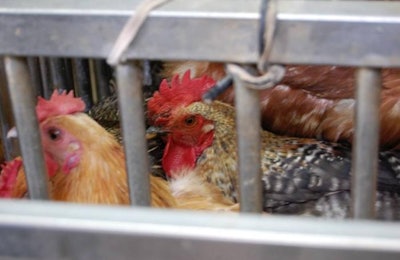
Enhancing biosecurity is the talk of the U.S poultry industry this fall with everyone trying to make sure that their farms have perimeter buffer areas around their poultry houses and lines of separation between the outside of the poultry house and where the birds actually live. Everything is focused on reducing the chance for the avian flu virus of getting onto a poultry farm and from getting inside the poultry house. But how do these concepts apply if the birds are raised free range and the birds are brought to market live?
I attended the 2015 International Poultry Forum China in Shanghai this August and, after the conference, I had the opportunity to get a glimpse into the future of the broiler industry in China when I visited Cargill’s Chuzhou complex. China’s poultry future was just a two-hour high-speed train ride from Shanghai. On the complex’s farms, all of the latest thinking in biosecurity measures were being employed to prevent introduction of infectious disease onto the farms. Meanwhile, back in Shanghai, it was evident that even in this modern city, a sizable segment of consumers still clings to the production practices and distribution channel of the past.
Our conference was held on the edge of the financial district in Shanghai, a city whose skyline rivals or even exceeds Manhattan’s. Within a few blocks of our hotel were several “wet markets” which in the U.S. might be touted as “farmer’s markets,” which all had a wide variety of fresh fruits, vegetables, eggs and live seafood. One of these markets, just three blocks from our hotel, had live chickens and pigeons available for purchase and onsite slaughter.

Terrence O'Keefe | Farm fresh eggs offered for sale at an open air market in Shanghai, China.
Through a translator, the owner of the poultry described the virtues of the taste of the so-called yellow chickens, which he said were far superior to the white broiler chickens you can purchase processed, packaged and chilled in the grocery store. The live birds, which are brought in crates from the countryside, are still popular among individuals and foodservice outlets, according to the birds' owner.
The return of backyard to chickens to neighborhoods in the U.S. has become a mini-trend among the “locavore” set. The presence of this new population of outdoor poultry carries with it an increased disease risk for neighboring commercial poultry operations. The number of backyard flocks in the U.S. is tiny compared with the staggering number of farmers each with a handful of birds in China. Consumer preferences can change over time, but it sure looks like “wet market” poultry will be around in China for quite some time.


















